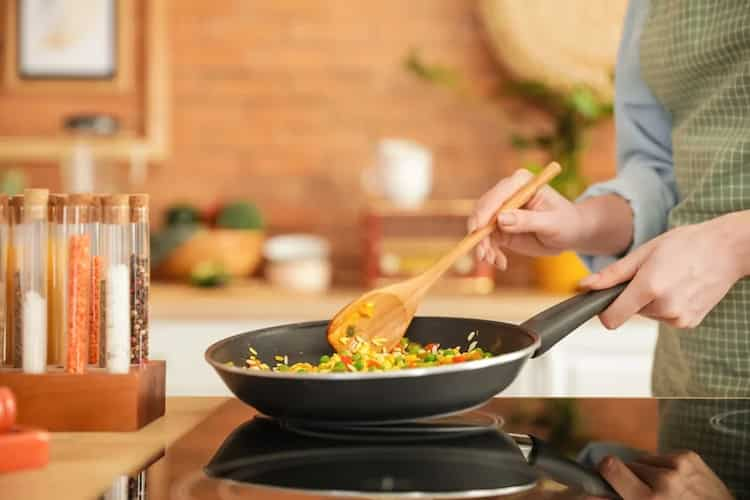Dutch ovens, saucepans, skillets, stockpots, soup pots: These also come with the corresponding lids, if you have them in your kitchen. And on occasion it looks as though the stack of lids is simply taking up space. When to cover a pan is a topic that some recipes explicitly address, while others curiously avoid the topic altogether. You may develop your cooking instincts by adhering to a few basic rules, and you'll no longer have to wonder when to cover something with a lid.
Covered Cooking
If you want to maintain the heat within your pot, you should always cover it. To conserve time and energy, put the lid on while bringing something to a simmer or a boil, such as a pot of water for cooking pasta or blanching vegetables, a batch of soup, or a sauce. Remember to remove the lid after the liquid has reached the boiling point to keep the pot from spilling over. Put the lid on to prevent any more liquid from escaping if you want to preserve moisture within, such as when your pot of soup, stew, or sauce has reached the ideal consistency but you still want to continue cooking the vegetables and blending the flavours.
Trying to keep both moisture and heat inside? The best way to accomplish both is to keep the lid closed. Steaming and braising are two important culinary techniques that rely on heat and moisture to work. Foods like vegetables, seafood, and grains can be steam-cooked to the ideal tenderness without drying out because steaming provides a moderate, moist heat. The preferred technique of cooking for harder types of beef, such as brisket, chuck, pork shoulder, and short ribs, is braising. For outcomes that are luscious and fork-tender, they require moist heat applied over a long period of time.

Uncovered Cooking
If you want to reduce a sauce or thicken a soup, leave the lid off when cooking a soup, stew, or sauce since this permits water to escape. As a result of more water evaporating and the liquid becoming thicker as you simmer your food longer, the flavours also become more concentrated. Simply let the soup boil with the cover off until it reaches the desired thickness if you glance at the pot and decide you prefer it thicker. The majority of sauce and gravy recipes call for reducing a liquid—typically stock, juice, or wine—in order to lessen volume and enhance flavour.y
When attempting to get a nice sear, it is also advised to leave the lid off. Steaks, duck breasts, lamb chops, pig chops, salmon, tuna, scallops, and other types of meat and seafood can all be seared, which is done in an extremely hot pan. The result is a rich, caramelised crust on the outside. You should leave the pan lid open at this point because moisture is the bane of pan searing since it produces steam and prevents the formation of a crisp coating. Both stir-frying and deep-frying use the same methodology: The production of a caramelised, crispy top on stir-fried and deep-fried items is hampered by moisture, just like during pan searing.
It's important to leave the pan lid off during frying because all meals release some steam during the cooking process. This allows the steam to escape rather than condense on the lid and leak back into the hot oil. For the greatest stir fry, fried chicken, French fries, pakoras, cutlets, doughnuts, fried chicken, fried fish, and other crunchy-crispy fried favourites, don't overcrowd the pan and leave that cover in the cupboard!


